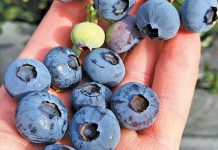After part-time Free State cattle farmer Selekiso Matasane acquired 388ha, he taught himself how to plant sunflower, wheat and maize. Never relying on handouts and taking good neighbourly advice, he gradually expanded his successful farming operation, writes Peter Mashala.
ELEVEN YEARS AGO, SELEKISO Matasane was building a career in the Free State hospitality industry, working as the assistant restaurant manager of the four-star Aldam Estate, a resort in Ventersburg. Staff living on the estate were able to rent land, so Selekiso became a part-time cattle farmer with 40 head of cattle, while still working at the restaurant.
“It was difficult supporting a family and the cattle on my wages, so I occasionally had to sell weaners to pay the rent,” Selekiso recalls. After realising he could make a good profit, he decided to become a full-time cattle farmer. His herd had also increased to 140 and needed more space.
The obstacle of funding
“I started looking for a farm and found the 388ha Verblyding, but I didn’t have the money to buy it, so I went to the Land Bank to get a loan.” With no assets to put down as collateral, Selekiso didn’t qualify for a loan. He sold weaners to put the profit down as a deposit, but still couldn’t get a loan. Land Bank personnel then told him about the government’s Land Redistribution for Agricultural Development (LRAD) programme. “I was finally able to get Verblyding in 2004 through the programme in collaboration with the Land Bank,” he says.
Discovering crop farming
Selekiso had wanted the land for his cattle – crop farming was not part of his plans. However, everyone else in the area was growing sunflower, maize and wheat instead of running cattle. Much of his land was unused and other farmers started approaching him to rent it. “Because I didn’t have a clue how to grow anything, I rented out 243ha and was left with 10ha of arable land,” he says.
Selekiso decided he would try planting this remaining land to sunflower, which to his surprise did very well. “I made a clean profit of R35 000 by selling the harvest to Afgri and by the end of that planting season, I’d made R20 000 from the rentals,” he says. “I then realised I could successfully diversify.”
Selekiso decided he would expand the next season and went back to the Land Bank to borrow money. Taking a big risk, he expanded his sunflower crop to 107ha “I was lucky once again and got just over R180 000 from that land,” he says.
By then he was part of the 13-member Kopanang Small Farmers’ Association, which received two tractors from the agriculture department through an LRAD grant. “All 13 of us had a considerable amount of land, but how two tractors would help us puzzled me. I had about 210ha I intended to plant that season. With so many of us and so much land, it meant we all had to plant around the same time,” he explains.
Getting help to succeed
Selekiso knew then he had to rely on himself. Because he had no implements and machinery, he rented them from his neighbour, CJ du Preez. “I then met Phillip Basson, a nearby commercial grain farmer and we built a good relationship,” he says. “No man is an island, so I asked Phillip for advice and he was more than happy to help.” Selekiso planted 150ha to sunflower and his first maize crop on 60ha. “Farming involves a lot of risk and if I didn’t take a risk then, who knows what would have happened?”
Because rain was scarce, his harvest was just below 2t/ha, but he managed to make enough profit to buy some implements. In 2006, he decided to try wheat for the first time. He planted 33ha, which yielded 1,7t/ha. The following season, he increased his maize crop from 60ha to 110ha and reduced his sunflower to 110ha. Selekiso was doing so well, he was noticed by the Grain SA Farmer Development Programme’s Free State provincial coordinator, Johan Kriel. “Johan advised me to get as much knowledge as possible, because the grain sector is high-risk for every farmer, but riskier for emerging farmers,” he says. Selekiso enrolled in Grain SA’s Farmer Development Programme, which includes courses in agribusiness management, tractor and implement maintenance and advanced maize production and marketing.
More challenges
Selekiso explains the lack of crop insurance is a real problem. “Because I had put my land up as collateral, my loan was not enough to cover production insurance. So if I got badly hit by disaster, I would’ve been ruined,” he explains. He feels government should get involved as a re-insurer for emerging farmers, to cover the remaining portions their loans can’t. “This would reach more people and cost far less than what government’s spending on grants,” he points out.
Other challenges include accessing markets and paying for storage facilities when market price isn’t good. “We have to pay a lot of money to store our produce in silos.” Also, because of the high fuel price, hiring additional implements and tractors is expensive. “Luckily Phillip offered to help me out at a reasonable price,” Selekiso says. With Phillip’s help, he planted 150ha to sunflower. “With my profit I managed to pay off my farm and bought two tractors.”
Phillip describes Selekiso as a man who loves his work and isn’t afraid of challenges. “I decided to help him because he made a huge impression on me,” he explains. “For someone who started out with no farming experience, he’s worked very hard to be where he is now. Selekiso doesn’t rely on handouts – he’s always worked for what he has.”
In 2008, Selekiso expanded to 192ha under sunflower – the Free State Cooperative assisting him with 92ha. “I planted the other 100ha on my own, as well as another 61ha under white maize,” he says. At times, he’s had to rent grazing land from the municipality for his herd of 140 cattle and also rents another 160ha farm at R25/ha. But he’s looking to expand even more. “I’d like to have at least 1 000ha eventually,” he says.
Selekiso feels the agriculture department is treating emerging farmers unfairly by not giving them first priority in land acquisition. “The department is giving beginners land they’re not able to use and are denying us the opportunity to expand,” he says. “If you give 1 000ha to a new farmer, what do you expect? Most of these guys are not even farmers. They later sell the land back to white farmers, making an effortless profit. Land should be given to those who have proven they can be productive.” |fw








